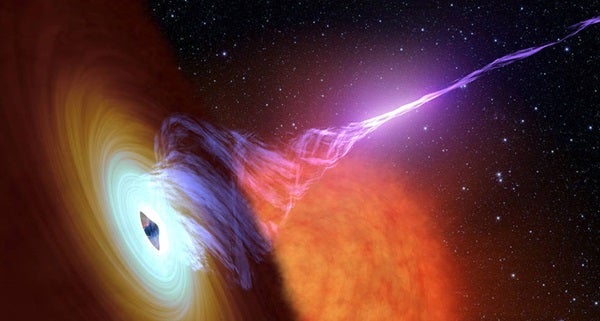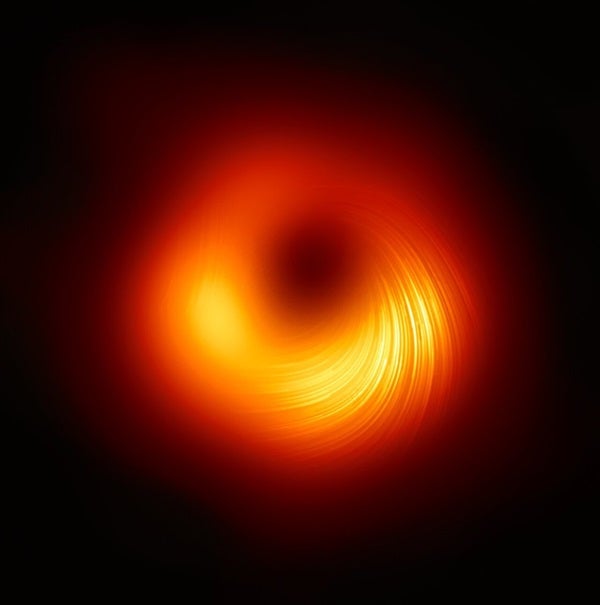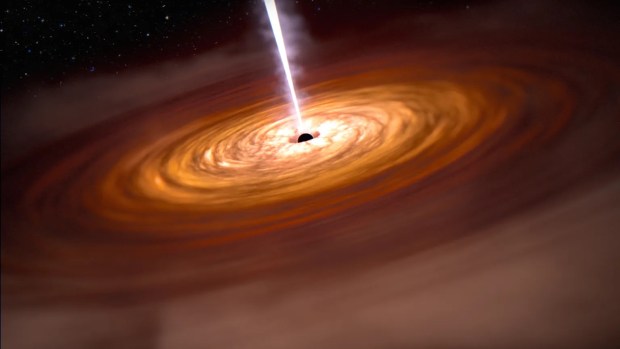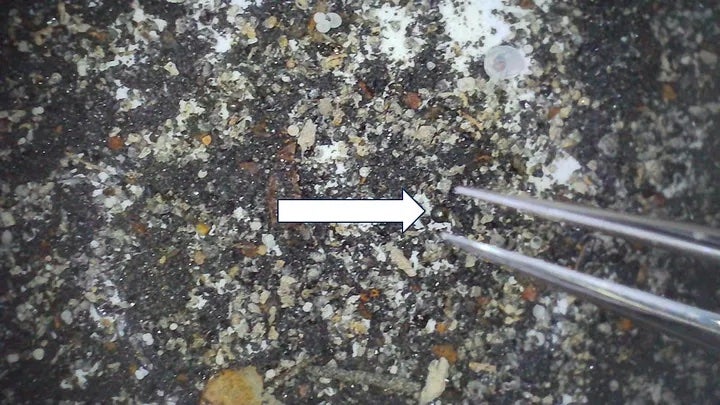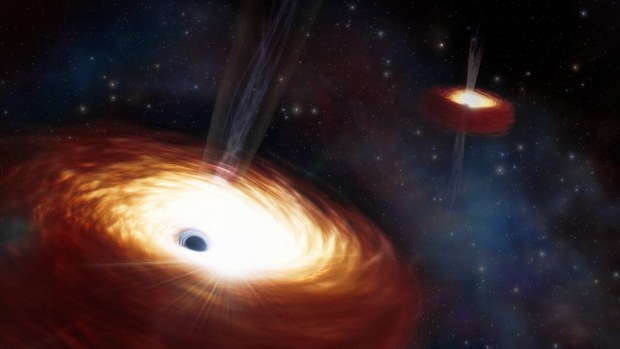Black holes — which are forged from massive stars that can no longer fight gravitational collapse — may not be entirely one-way streets. True, not even light that strays too close can escape their grasps. But that hasn’t stopped scientists from pondering a number of theories about various phenomena that could allow black holes to “leak” energy into the larger universe.
These mechanisms range from particle pairs split up at a black hole’s event horizon to powerful jets and outbursts shooting from the black hole’s surrounding disk, driven by magnetic fields like those recently mapped around M87’s supermassive black hole. And in a recent study, published January 13 in Physical Review D, researchers have suggested that a combination of both particle and magnetic phenomena may team up to help funnel energy away from spinning black holes.
A spinning black hole, or Kerr black hole, drags the very fabric of space-time with it — a phenomenon called frame dragging. The area in which frame dragging is most prominent is called the ergosphere, located just outside the event horizon’s outer boundary. This is the region that’s integral to all the theories about how we might siphon energy from a black hole.
“The three processes consider the same physics: using the ergosphere as a way to extract energy by decreasing the rotation of the black hole,” Felipe Asenjo, a physicist at Adolfo Ibáñez University in Chile and co-author of the new research, tells Astronomy. “We studied a model to extract energy from a black hole by using the relativistic magnetic reconnection that can occur in a plasma inside the ergosphere.”
But as you might imagine, the ergosphere of a black hole is a complicated place. And figuring out exactly how it could let energy escape the most powerful and violent beasts in the universe is no easy task.
Particles part ways
In the 1960s, English physicist and Nobel laureate Roger Penrose was already thinking about how black holes — a term that wasn’t coined until 1967 — could serve as a source of harvestable energy. In 1971, Penrose teamed up with fellow physicist R.M. Floyd to publish a paper putting forth the first major model of energy extraction from black holes.
“The process of energy extraction proposed by Penrose is based on a particle splitting event,” says Luca Comisso, a physicist at Columbia University who also co-authored the new research. First, the particle splits into two parts. Then, Comisso says, “One part ends up in a trajectory with negative energy, and the other one escapes from the black hole.”
In other words, the escaping particle carries momentum away from the black hole, which reduces its rate of rotation. And if this process continues unabated, it’s possible that a Kerr black hole could eventually become a non-rotating, or Schwarzchild, black hole.
However, there’s something this particle-splitting energy extraction mechanism — named the Penrose process — lacks. “The Penrose process is purely mechanical. It doesn’t invoke magnetic or electric fields,” Comisso says. This means that another mechanism is required to account for the effects of a black hole’s magnetic and electric fields, which might help explain some of the most powerful phenomena in the entire universe.
Another mechanism that could possibly extract energy from black holes was put forward in 1977 by Roger Blandford and Roman Znajek.
The Blanford-Znajek process involves magnetic fields permeating the violently churning, close-in material — the accretion disk — that’s gradually being fed to the surface a black hole. The duo described how the angular momentum of a Kerr black hole could be sapped by the magnetic fields associated with its accretion disk. They believed this causes the disk to spew out powerful jets, thus extracting the black hole’s rotational energy.
Best of both worlds?
Comisso and Asenjo’s new mechanism is a hybrid of the previous two processes, suggesting a unification of particle (Penrose) and magnetic (Blanford-Znajek) phenomena to liberate energy from black holes. The powerful magnetic fields are violently broken when space-time is dragged along with the black hole’s rotation. And when these magnetic fields reconnect, particles are violently launched into space, carrying away energy much like the Penrose process.
“Large amounts of energy can be extracted by this [hybrid] process, which can operate with an efficiency that exceeds 100 percent. As a consequence, this process produces also a spin-down of the black hole and can potentially give rise to powerful flares,” says Comisso. “I think that if the mechanism we have proposed exists alongside the Penrose and the Blandford-Znajek mechanisms, the black hole will actually lose energy due to a combination of these processes.”
Of course, this talk of energy siphoned from black holes may leave you wondering if humanity could ever use a Kerr black hole as a massive cosmic battery.
“It is a possibility, even if it’s not something that will be achieved in the near future,” Comisso says. “Penrose envisioned a highly advanced civilization that could sustain itself by harvesting energy from a rotating black hole through the process that he proposed. Of course, there is a large — really large — number of difficulties that need to be overcome for this to happen.”
Yet, if humans are ever able to harvest energy from a black hole, we might wonder: Where is that energy really coming from?
“To me, the beauty is in the realization about the source of that energy,” Asenjo says. “The extracted energy comes from the rotational energy of the black hole. But it is the space-time around the black hole that rotates. Therefore, the mechanisms are extracting energy from the space-time itself.”
“To realize that nature can do that is astonishing,” Asenjo adds. Plus, “there could be other ways to extract energy from space-time that remain to be explored.”

